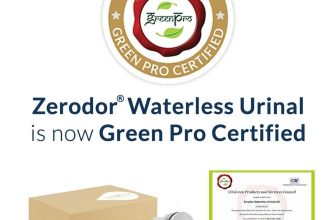How do Eco friendly paints contribute in lower down carbon footprint?
Changing the color of your home is perhaps the fastest way of bringing in a complete makeover. With the rooms being just the same, repainting your home walls will feel like a completely different space and this, consequently, has been a favorite tool for both homeowners and interior decorators. However, it’s not as easy a choice when it comes to choosing the kind of paint you finally bring home. It will be important to note that we aren’t talking about color here. That is as vast a topic in its own right. Right now, we are concerned about the kind of paint materials you have to choose from. Of course, the first factor in this choice will be your budget. But if you aren’t too worried about the investment, eco-friendly paints would be the perfect suggestion.
Eco-friendly paints – What does it mean?
In simple terms, eco-friendly paints refer to natural paints that have low levels of volatile organic chemicals or VOCs. If you have ever opened a can of wall paint, you must remember the sharp smell it gives out. That’s VOC. It’s the chemical you actually smell and not only does this make you cringe for a moment, but it comes with adverse health effects in the long run. The toxic chemicals will linger in the room for a long time after a paint job is complete and in some cases, will be gradually releasing themselves for the whole lifetime of the paint itself. This is the reason why painters will tie a mask while working and insist on a well-ventilated environment.

Most paints available in the market today are oil and latex-based and according to Waste Management Inc., they fall under the “hazardous” category since the color pigments are mostly made from heavy metals such as lead. Sometimes, paints specifically meant for the outdoors also contain high amounts of fungicides. Today, most local paint brands will integrate some amount of biocide in the product to increase the shelf life and as per Green America; these can be detected even after five years of the initial paint job. All of it sounds disastrous since a home is where you are meant to raise a family, be happy and stay healthy. It’s easy to get fooled by the color but it is a responsibility to understand what lies beyond the looks!
This is where eco-friendly paints come in. A rather recent trend, these paints are generally made from a huge range of naturally available materials including milk proteins, clay, balsam, citrus, and natural minerals. The milk-based paint, for instance, is made from a combination of casein (milk protein) and lime. Though these are gradually coming to a trend, natural paints like this have actually been used for hundreds of years now. If you go to any Indian county side today, you will be astonished by how smoothly they have been able to paint the walls using mud and select natural wastes. While clay mixed with cow dung has been a prominent choice of paint for village homes in India, modern technology has given rise to more sophisticated alternatives like milk paints.
Strictly for interior walls, products like milk-based paints are very low in VOC levels and are completely safe to be used in homes.
How to know if it’s eco-friendly?
Strict standards have been set by organizations like EPA to ensure that a paint product passes the eco-friendly criteria. When shopping for eco-friendly paints, it is necessary that you look for:
- The VOC label
- An organic certification (check on the internet for authentication)
- Check for chemical ingredients in the paint.
However, it’s not just chemicals you are getting rid of in your homes by choosing eco-friendly paint products. Here are some added benefits to natural paints that should be considered:

1. Minimized environmental impacts
Natural or eco-friendly paints are strictly water-based paints without any oil base. Consequently, they aren’t toxic even when put to waste. Easily biodegradable, they leave very little impact on the environment. Over the years, technology has been improving and we now have amazing products with a range of colors for natural paints.
2. Natural raw materials
Natural paints are derived from plant extracts, lemon peels, bee wax, seed oil, and the kind. This is what primarily defines the nature of eco-friendly paints. Consequently, producing natural paints don’t lead to unsafe emissions, and nor does it require precautions when you are applying them in your homes.
3. Health benefits
The young generation of homemakers is quite upbeat about eco-friendly paints today. Thankfully, this is the generation that does take the environment seriously and does its bit in fighting the global climate crisis we are facing. While natural or eco-friendly paints do cost a tad bit more, they do balance out the extra costs in the health benefits they provide. Being non-toxic, they do not lead to any kind of illness, normally seen with chemical-based paints.
4. Fewer coats
Another reason why natural paints offer a good cost advantage is that they need fewer coats for the job to be done. Qualitatively superior to chemical-based paints, natural paints also provide better color retention properties, better coverage with fewer coats, minimal abrasion, and an extensive choice when it comes to the range of shades.
5. Minimal waste
Made from natural products, there is very little waste generation in the natural paint production process. In the cases of chemical-based paints, several toxic by-products are produced during manufacturing and this alone leads to the toxicity of the environment. A more serious concern with the same is that these toxic wastes continue to harm natural resources for several years to come. However, eco-friendly paints don’t come with any such bi-products.
A home is supposed to be the sanctuary for a family. This is a place where you bring kids into your life and see them grow. It certainly is a good practice to go for natural products, especially when it comes to the wall paint you are using. They are the part of the household that you most interact with and you can leave it to chance for an illness to creep underneath.







